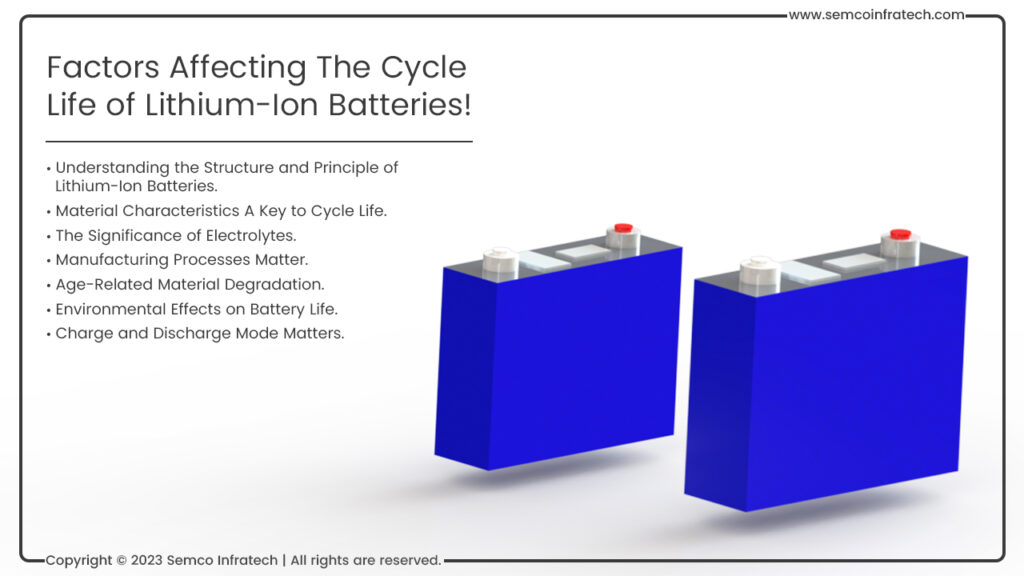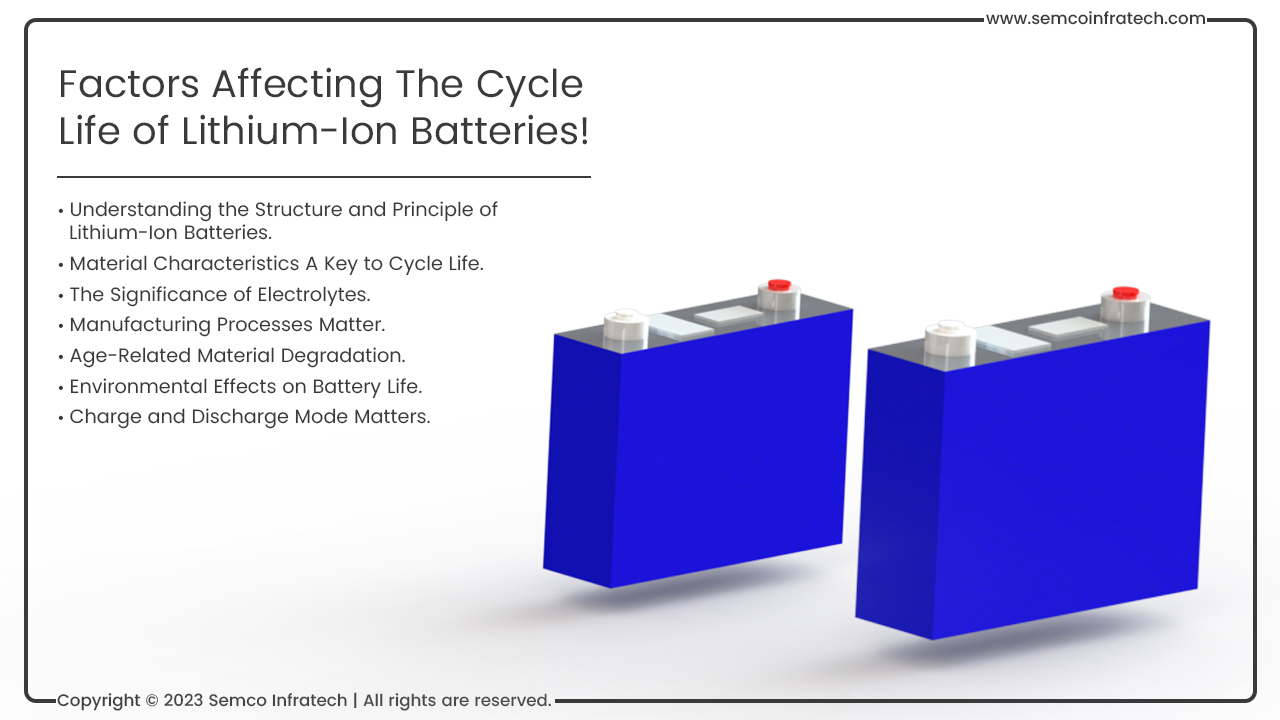
With the relentless advancement of science and technology, the ubiquity of lithium-ion batteries is undeniable. These batteries offer remarkable advantages like high voltage, lightweight design, and eco-friendliness. However, as they undergo numerous charge and discharge cycles, their capacity and overall performance can diminish. The speed at which battery capacity attenuates is a critical indicator of battery quality. In this article, we delve into the complex physical and chemical reactions involved in lithium-ion battery cycling and explore the multifaceted factors influencing their cycle life.
I. Understanding the Structure and Principle of Lithium-Ion Batteries
Lithium-ion batteries are intricate systems consisting of positive and negative materials, an electrolyte, separators, current collectors, and battery housing. The core of these batteries lies in the interaction between positive and negative materials, as lithium ions shuttle between them through the electrolyte during charge and discharge cycles. The formation of a “solid electrolyte interface membrane” (SEI) plays a crucial role in allowing lithium ions to freely pass through while acting as an electronic insulator.
II. Material Characteristics: A Key to Cycle Life
Material selection stands as the foremost factor in the battery design process. The positive and negative materials, in particular, are pivotal. To ensure prolonged cycle life, it’s essential that these materials possess excellent cycling performance. Proper balance in the capacity of the negative and positive electrodes is crucial to prevent issues like lithium dendrite formation and structural collapse.
The choice of collector materials, such as aluminum and copper, also influences battery performance. Corrosion of collectors can result in capacity loss and reduced discharge efficiency, which can be mitigated through treatments like acid-base etching and conductive coatings.
III. The Significance of Electrolytes
The type and quantity of electrolytes used significantly impact battery reversible capacity. Electrolytes facilitate the de-intercalation and intercalation of lithium ions within electrode materials, affecting the interface conditions and the structural changes of these materials. The depletion of electrolytes, owing to interactions with electrode materials and SEI formation, can impact battery life.
Additives, such as benzoate, can enhance cycling performance by mitigating side reactions and ensuring efficient ion transfer.
IV. Manufacturing Processes Matter
The intricate manufacturing processes of lithium-ion batteries, including ingredient preparation, coating, winding, casing assembly, injection, sealing, and formation, must be executed with precision. Factors like binder addition, mixing speed, slurry concentration, and temperature and humidity control during material preparation are essential to achieving even dispersion.
In coating processes, controlling the amount of material on electrodes can impact battery attenuation rates. Proper compaction of electrodes plays a pivotal role, too—adequate compaction density can increase discharge capacity and cycle life.
V. Age-Related Material Degradation
As batteries undergo charge and discharge cycles, a series of side reactions occur, impacting their cycle life. The stability of the SEI membrane at the electrode-electrolyte interface is critical. If the SEI membrane is unstable, it may precipitate lithium metal, leading to rapid degradation of negative active materials. Stability in the SEI membrane ensures a longer battery life.
VI. Environmental Effects on Battery Life
The operating environment significantly influences lithium-ion battery cycle life. Extreme temperatures, whether too low or too high, can adversely affect battery performance. Low temperatures hinder ion transfer dynamics, increase SEI impedance, and lead to lower discharge capacity. At high temperatures, batteries may suffer from electrochemical polarization, gas generation, and deformation.
Vibrations, impacts, and collisions can occur during transportation or usage, potentially damaging battery components and affecting performance.
VII. Charge and Discharge Mode Matters
The charge and discharge mode, including current levels, cut-off voltages, and methods employed, can have a substantial impact on battery cycle life. Inappropriate parameters can lead to capacity loss and performance degradation over time.
Conclusion:
The cycle life of lithium-ion batteries is a complex interplay of material characteristics, electrolytes, manufacturing processes, environmental conditions, and operational parameters. To meet the increasing demand for high-quality lithium-ion batteries, manufacturers must delve into these influencing factors, ensuring the longevity and performance of these indispensable power sources. A deeper understanding of these variables promises not only longer battery life but also enhanced battery safety and reliability.
For More Updates Follow Us
WhatsApp – Facebook – Instagram – Twitter – LinkedIn – YouTube

One response
[…] Maximizing the lifespan of your batteries is both economically and environmentally responsible. Here are some tips to ensure your batteries serve you longer: […]